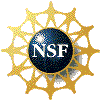


 |
 |
| Partnerships for Enhancing Expertise in Taxonomy |  |
PROJECTS
Because of postulated convergence, morphological data cannot demonstrate the monophyly of Eupelmidae. As an alternative data set, I plan to use molecular sequence data (28S-D2 r RNA transcript region and possibly other regions) to resolve the relationships among these subfamilies by using unweighted parsimony and successive approximations character weighting. The null hypothesis of congruence between cladograms obtained from molecular and morphological data will be tested. Useful new molecular sequence data may distinguish homology from homoplasy in the morphological data.
To test the null hypothesis, several molecular data sets (e.g. 18S-E21 of 18S rRNA, COI, COII, NADH1) will be gathered and analyzed. The best candidate for the Chacidoidea is the D2 region of 28S rRNA having a maximum length of 741 bp with 270 total informative sites. The region has shown to be appropriate for the analysis of chalcidoid family and subfamily. I will use Campbell et al. (1995) methods for isolation of genomic DNA, amplifying of PCR, cloning of PCR-amplified products, and sequencing.